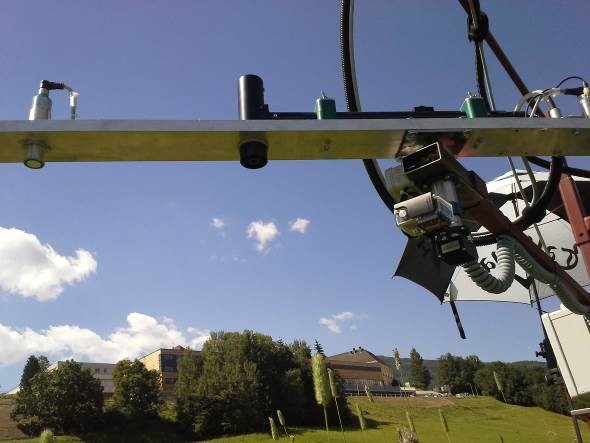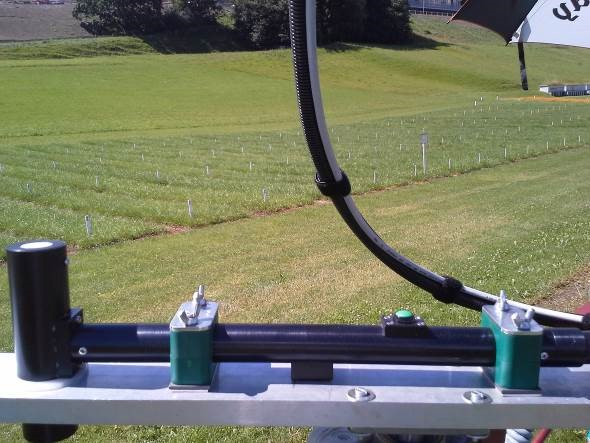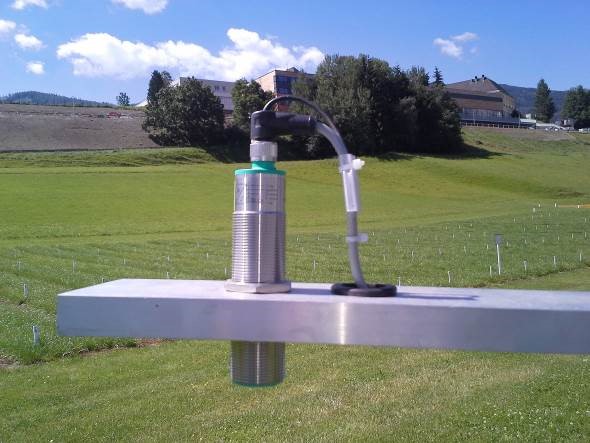At the HBLFA Raumberg-Gumpenstein, non-invasive survey methods have been increasingly used on permanent grassland since 2013, such as ultrasound technology to determine plant height or field spectroscopy to determine vegetation indices. In order to efficiently carry out extensive measurement campaigns in numerous grassland experiments and projects, a mobile measurement platform was developed on which several non-invasive measurement techniques are combined. With the help of this mobile measuring unit, measurements can now be carried out under precisely standardized conditions with minimal personnel effort and the highest possible quality and reproducibility.

Fig1: Motor-controlled measuring strip with installed sensors

Fig2: Field spectroscopic surveys

Fig3: Determination of growth height using ultrasonic sensors

Fig4: Photo documentation using a GoPro camera








